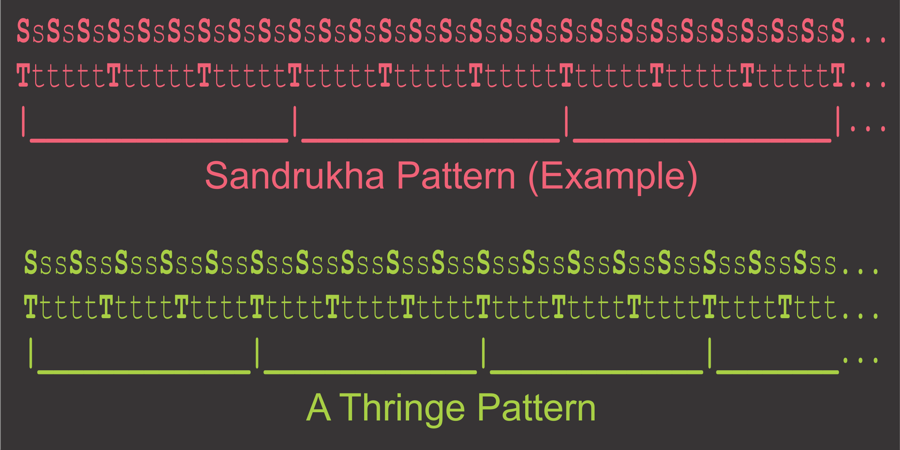The Sandrukha
This is one of the great pair dances of the Cities of Tarnus, a dance of courtship and desire and loss and hope. It is set against a very slow pulse, which is tripled and then tripled again as the dance gathers force, and then slowed again, in cycles as numerous as the dancers can endure. The movements resemble an adagio transforming to a tango, then tightening to flamenco pace, and then relaxing again, all in a three-beat pattern, three within three within three. The partners remain in contact throughout the dance, sometimes straining to pull apart, sometimes clenching close, sometimes drifting gently together. The sandrukha demands exquisite muscle control and body and limb flexibility. Passion helps, but training is essential.
The Dance, The Music, and the Feeling
Visualize lovemaking on the dance floor. For what it’s worth, the City barholes on the planet Tarnus are places where public sexual expression is accepted, as long as its conduct stays strictly within the rhythms and spirit of the music being played. That means, among other things, that in the sexual dances only the feet, hair and fingertips (not thumbs) of the partners may touch the floor. In the sandrukha, only the feet may touch the floor; in a social context, intercourse is not a part of this particular dance, though it often follows as a direct consequence.
From a musical perspective, the slowest beat of the sandrukha resembles the pulse in a piece of music of ancient Earth, found in Stanley Kubrick’s film Barry Lyndon: the Sarabande, done in three and taken at a tempo even slower than that in the film. A heavy, insistent bass beat and figure is very important in the sandrukha’s slowest rhythm. The tempo of the middle beat (neither slowest nor fastest) comes to about 120 beats per minute. This would make the slowest a third of 120, or 40 beats per minute, and the fastest three times 120, or 360.
The music of Tarnus is in general quite complex rhythmically; many instrumentalists enjoy playing with various cross-rhythms in the sandrukha, using six against the mid-tempo three, alternating six with five and seven. The fiery street poet Winjilles Thringe, who hammers out her verses in hard syllabics over her band’s explosive percussion, often uses five accents over three to create a cycle of fifteen, which syncs with every fifth one of the slowest pulses. In some of her more-frenzied pieces, she and her musicians play five fast beats and five mid-speed beats simultaneously across the sandrukha’s threes to create a kind of concentric spin-rhythm not familiar to the ears of Ancient Earth.
Below is a pair of tempo patterns. The upper pattern outlines the sandrukha‘s combinations of pulses. The lower pattern sketches one of Thringe‘s favored patterns.

Thringe also plays five against three, stuffing five beats into the three-beat time interval, but she does that mostly for fun, and for a few of the more-talented dancers.
The world of Tarnus possesses a wide variety of percussion and tonal percussion instruments, many with finely-integrated electronic dimensions to their voicings and timbres. This aspect of the music calls for a whole separate discussion.
From the novel Descending Road, in one of its early chapters, we find Andrew and Leil dancing the sandrukha.